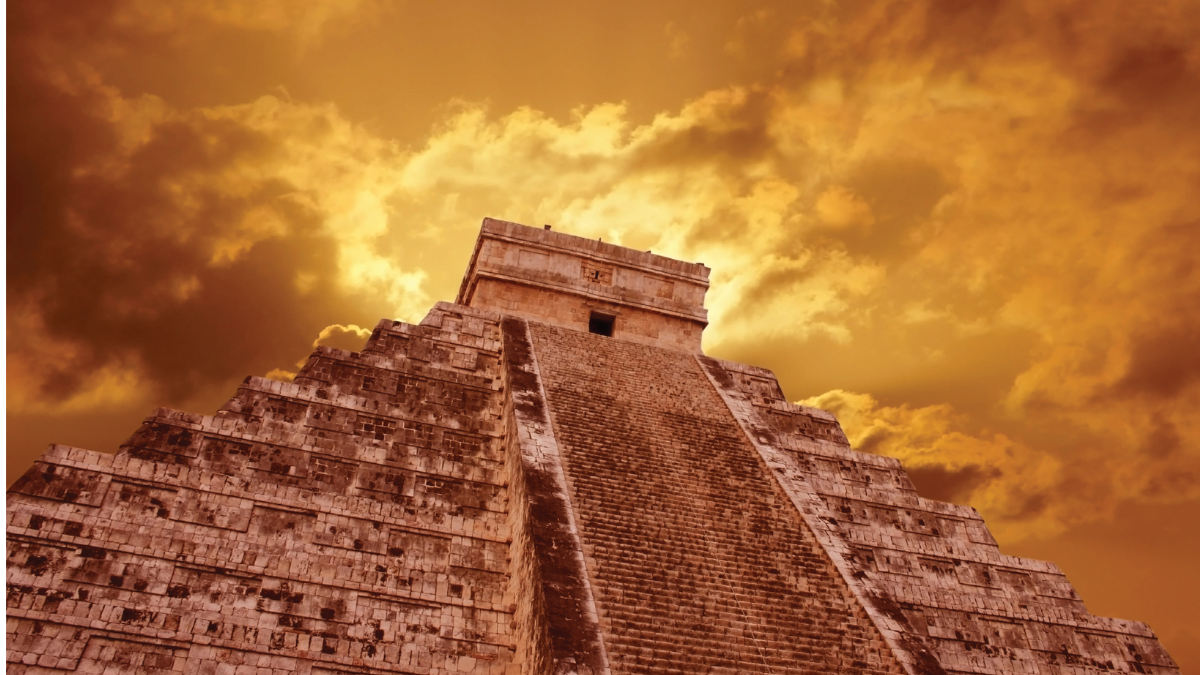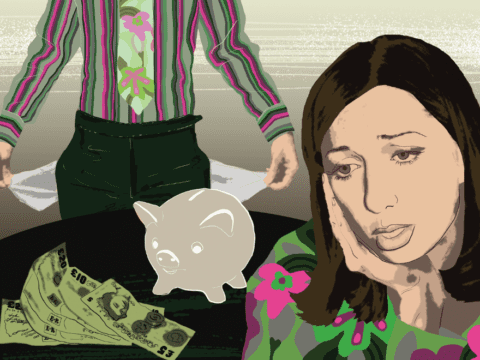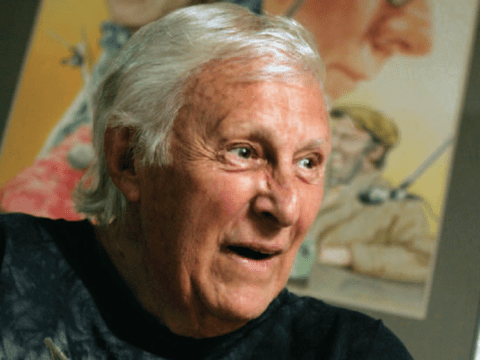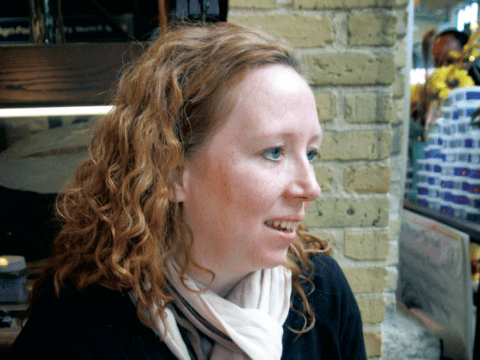From the scaremongers of the Middle Ages to the gloom-and-doom merchants on the eve of the new millennium, humanity has long been prone to the-end-is-nigh hysteria. The latest cause for concern: a doomsday prediction that cataclysmic events will happen on Dec. 21, 2012.
The date comes from the Mesoamerican Long Count calendar, which completes the “Great Cycle” equalling 5,125 years next December. That’s when the ancient Mayans of the Yucatán Peninsula believed time would be reset — and the world would be reborn. With increasing frequency and embellishment, the prediction has been disseminated online and through books, films and television.
Apocalyptic prophecies like this are usually met with condescension and mockery. But the growing prevalence of natural disasters, together with the rise of global terrorism and religiously motivated conflicts, has further provoked end-of-world imaginings. This fascination with the end permeates secular and religious cultures, and has shifted from the lunatic fringes closer to the mainstream. Even though the apocalypse has so far failed to arrive, its believers stir the collective consciousness. We’re compelled to pay heed to the anxieties of doomsayers, scholars say — if not their grisly warnings.
As historian Norman Cohn points out in The Pursuit of the Millennium, all doomsday scenarios share some basic ideas: the cataclysm is on its way and will arrive suddenly; it will completely transform life as we know it; and it will be achieved through forces both supernatural and human.
Futurist John Petersen, for one, sees us heading into extremely rough waters. But as he argued in his 2008 book, A Vision for 2012: Planning for Extraordinary Change, the com- ing crisis — brought on by environmental and human factors — will spark a much-needed transformation that will truly remake society. “Throughout history, society has undergone transitions from one significant era to another,” he says. “And these almost happen like clockwork. The first ones are very long, taking billions of years. But we’re now seeing rapid, profound changes in the planet in ways we have not seen before.”
Christopher Keating, however, disagrees that we’re on the verge of global catastrophe. In his new book, Dialogues on 2012, he lays out precisely why the world will not end next year. When we see indications of a coming calamity, it’s easy to take our fears to an extreme, says Keating, a former physics professor and analyst for the United States Navy. “Still, [the hysteria] surrounding 2012 can certainly cause a lot of harm. I see people all the time who are anxious, investing in survival bunkers and non-perishable food supplies, or considering suicide.”
Keating continues, “Most people, let’s say 90 percent, know that there’s nothing to the 2012 prophecy. But the remaining 10 percent — which amounts to 30 million in the United States alone — remain fearful of the future and its grim possibilities. That’s a lot of people to take seriously.”
Apocalyptic imaginings have deep roots in religion. In many faiths, the end of days is prophesied in both sacred texts and folklore. Eschatology is the part of theology concerned with the final events in history. In Christianity, New Testament eschatology predicts the return of Jesus Christ, the resurrection of the dead and a great tribulation, followed by a new heaven and earth, or the “world to come.”
In the Middle Ages, the socially and economically disenfranchised continued to expect salvation through an apocalypse. This conviction gave rise to a community of radical Christians known as the Brethren of the Free Spirit. Because of the coming end times in 1200, they believed they were absolved of sin and acted accordingly. Wandering from village to village, they devoted themselves to hedonistic pursuits and stole from whomever they wanted.
Moments of crisis often breed apocalyptic thinking. In his new book, Heaven on Earth, historian and author Richard Landes tells the story of the 19th-century cattle killings in South Africa. In 1856, during “the brutal incursions of European imperialism,” a 15-year-old orphan named Nongqawuse prophesied that if the Xhosa tribe slaughtered its own cattle, stopped planting crops and destroyed its grain stores, the British would leave and a period of prosperity would follow. Their plan failed. But the majority of Xhosa didn’t view the carnage and ask, “What were we thinking?” In fact, many concluded they hadn’t slaughtered enough cattle.
The story, Landes writes, shows the reluctance to let go of doomsday prophecies. For some, like one Xhosa chieftain, admitting fault would bring shame and the loss of an “inebriating sense of empowerment.”
He compares these prophetic figures to “roosters in a barnyard who crow and have an electrifying impact on other animals.” Their movements, he observes, tend to conclude in bloodshed, to the point where they create their own “localized apocalypses.”
The 20th century saw its share of frenzied roosters. In 1978, Peoples Temple founder Jim Jones led over 900 followers to mass suicide in Guyana, anticipating global annihilation through a nuclear apocalypse. Proclaiming to be the world’s final prophet, David Koresh formed the Branch Davidian cult in the early 1990s and, following a siege on his ranch in Waco, Texas, by federal law enforcement agencies in 1993, died along with 54 other adults and 21 children. There was also Heaven’s Gate, the San Diego-based group founded by Marshall Applewhite and Bonnie Nettles. In 1997, 39 of its adherents — believing that the Earth was about to be “recycled” — committed suicide in order to reach an alien space craft they thought was following the Hale-Bopp comet.
More recently, doomsday cultist Harold Camping has been insisting the end is still near. In May, the 89-year-old radio personality inspired thousands to quit their jobs, empty their bank accounts and hit the streets to warn others about an imminent earthquake followed by several months of hell on earth. More than 20,000 billboards proclaiming “Judgment Day is coming May 21, 2011” appeared around the world, including in 17 Canadian cities.
A self-styled religious scholar, Camping said that he calculated the exact date of the Rapture using evidence from the Bible, only he got the biblical math wrong. “I can tell you that when May 21 came and went, it was a very difficult time for me,” the gravelly voiced broadcaster told the press at the time. “I really was praying and praying, ‘Lord, what happened?’”
When his revised prediction, for Oct. 21 of this year, also failed to come to fruition, Camping decided to retire from the doomsday business, departing as president of the Christian Family Radio network.
Such fear-mongering concerns theologian Harry Maier, a professor of New Testament and early Christian studies at the Vancouver School of Theology and author of the 2002 book Apocalypse Recalled: The Book of Revelation after Christendom. He says that Camping and others who are equally outlandish help to entrench the secular the notion that those who adhere to organized religion are somehow weak-minded.
The way Maier sees it, “Some of the world’s problems are so large, some people reach for apocalyptic language and evoke end-of-days tropes to capture the seriousness of the challenges ahead.” This kind of thinking allows people to surmount their deprivations, offering a sense of comfort and escapism. But there’s a better way to respond to adversity than by indulging in doomsday fantasies, Maier argues. “When things get really rough, this is a time when Christians must witness against despair. Christians, in particular, are called upon to live in stewardship, caring for their neighbour and the planet. That’s not to say that we’ll solve climate change, for example. But we must try to bring into flesh another vision of the future that isn’t about violence, condemnation and judgment.”
Chances are that on Dec. 21, 2012, the world will not come to a dramatic conclusion. And on Dec. 22, millions of people will likely await the next foreboding prediction. To doomsayers, religious or otherwise, Maier offers some more sage advice: “Don’t completely give up on the world just yet.”
***
This story first appeared in The United Church Observer’s December 2011 issue with the title “Is the end really nigh?”















